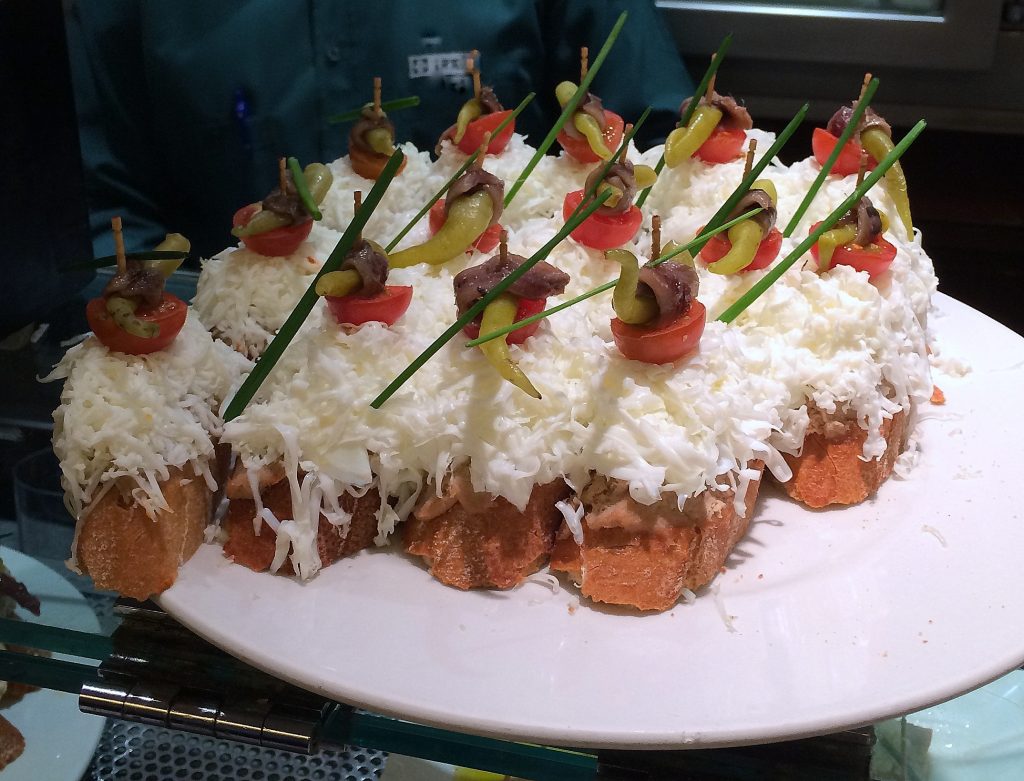Among the many things that make Spanish cuisine so wonderful, tapas definitely top the list. These small treats can pack bold flavors. They play a special part in Spain’s culture and have their own set of traditions.
The origin of tapas starts in Andalusia. Some argue that they are among the many Moorish influences that became embedded in Spanish culture. These small dishes have been a part of Spanish food culture for ages. According to some, tapas were established by King Alfonso X who ruled Castile and Leon during the later thirteenth century. While ill, the king was required to eat small portions with his wine. He then ordered that inns must serve food alongside wine in order to better serve the health of the public. But, a more likely explanation of the small portions’ beginning credits the famers of Andalusia who required snacks between meals to help maintain their energy levels. These treats were placed over glasses to keep out insects, hence the name tapa, meaning lid or cover.
In many regards, tapas are a culture in of themselves. The customs that accompany eating tapas are half of the fun. These small dishes are most commonly enjoyed with wine or beer, but some regions have their own drinks to pair with the meal. Some bars will serve a complimentary tapa with each drink orders, an old practice.

In Spain, it is customary for people to go to tapas bars before eating lunch and at night (usually not earlier than about 10pm) before enjoying dinner and will tapas bar hop. No matter what time of day, eating tapas is a social event, as it brings together friends and family and inspires good conversation. Tapas bars offer lively environments where people stand at tables or counters (and eat standing), and sometimes have to throw themselves into a hungry and eager crowd shouting their orders at the staff behind the bar. Some suggest determining the quality of a tapas bar by counting the number of toothpicks (which adorn some tapas to make them easier to eat) on the floor (the more toothpicks, the better the food as it clearly attracted more patrons). However, not all tapas bars will sport toothpicks on their floors, so sometimes counting the number of patrons or just following your nose is required.
When thinking about tapas, perhaps your mind immediately drifts to the classics such as marinated olives, Manchego cheese and Iberico ham. However, tapas are as diverse and varied as the numerous rich cultures that can be found in Spain. First of all, tapas can be divided into three categories: cosas de picar (which can be eaten with fingers), pinchos (which require a toothpick for ease of consumption, remember the toothpicks previously mentioned?), and cazuelas (which are small portions that are typically in a sauce). Second, Spain is a nation comprised of regions, each with their own distinctive character. Before the defeat of the last Spanish Moorish ruler, Boabdil, and the unification of Spain in 1492 (obviously a lot more happened that year in Spain besides “Columbus sailing the ocean blue”), the country was divided into different kingdoms (such as Catalunya, Castile and Andilusia). This fostered the development of the tangible diversity of very unique cultures, some of which were and still are fiercely independent in spirit. Naturally, these regions had dishes that were unique to their cultures. Each region has their own take on tapas dishes and have adapted them to best suit their own traditions. For example, while tapas are not a classic element in Catalunyan food culture, tapas bars can be found throughout the region, especially in Barcelona, and are very popular. In the Basque region, pinchos were adopted (and are known as Pinxos) as a tapas specialty. Personally, some of the Pinxos bars I went to in Spain were among my favorite.

When visiting Spain, you must take the opportunity to try the tapas and tapas culture. For at least one night, do as the Spanish do, and go out late and venture between different tapas bars. However, the only real rule in tapas culture is to eat, drink and be merry! So, buen provecho mis amigos.








